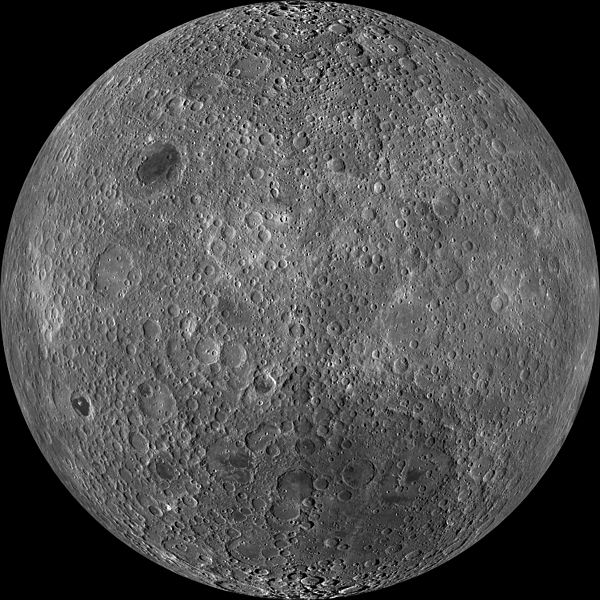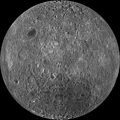Datoteca:Moon Farside LRO.jpg

Grondezza da questa prevista: 600 × 600 pixels. Other resoluziuns: 240 × 240 pixels | 480 × 480 pixels | 768 × 768 pixels | 1.024 × 1.024 pixels | 2.048 × 2.048 pixels | 18.000 × 18.000 pixels.
Datoteca originala (18.000 × 18.000 pixels, grondezza da datoteca: 85,34 MB, tip da MIME: image/jpeg)
Istorgia da las versiuns
Clicca sin ina data/temps per vesair la versiun da lura.
| data/temp | Maletg da prevista | dimensiuns | Utilisader | commentari | |
|---|---|---|---|---|---|
| actual | 01:47, 20. mars 2014 |  | 18.000 × 18.000 (85,34 MB) | Huntster | High resolution mosaic. |
| 06:12, 9. avr 2011 |  | 1.600 × 1.600 (1,44 MB) | Bubba73 | {{Information |Description ={{en|1=Far side of the Moon, by NASA's Lunar Recon. Orbiter}} |Source =http://apod.nasa.gov/apod/image/1104/farside_lro1600.jpg |Author =NASA - LRO |Date =2011? |Permission = |other_versions = } |
Utilisaziun da la datoteca
Naginas paginas mussan sin questa datoteca.
Diever da datoteca global
Die nachfolgenden anderen Wikis verwenden diese Datei:
- Utilisaziun sin af.wikipedia.org
- Utilisaziun sin az.wikipedia.org
- Utilisaziun sin be.wikipedia.org
- Utilisaziun sin bjn.wikipedia.org
- Utilisaziun sin bn.wikipedia.org
- Utilisaziun sin bs.wikipedia.org
- Utilisaziun sin ca.wikipedia.org
- Utilisaziun sin cs.wikipedia.org
- Utilisaziun sin de.wikipedia.org
- Utilisaziun sin en.wikipedia.org
- Utilisaziun sin en.wikibooks.org
- Utilisaziun sin en.wikiversity.org
- Solar System, technical/Moon
- User:Marshallsumter/Radiation astronomy2/Visuals
- Draft:Original research/Planets
- User:Marshallsumter/Radiation astronomy2/Visuals/Quiz
- User:Marshallsumter/Rocks/Rocky objects/Astronomy
- User:Marshallsumter/Radiation astronomy/Courses/Principles/Hourly 2
- User:Marshallsumter/Radiation astronomy/Courses/Principles/Midterm quiz
- User:Marshallsumter/Radiation astronomy/Courses/Principles/Final quiz
- Titan/Quiz
- User:Marshallsumter/Rocks/Rocky objects
- Draft:Enceladus/Quiz
- Moon/Quiz
- Stars/Sun/Heliology/Quiz
- Earth/Quiz
- Stars/Reds/Quiz
- Draft:Dione/Quiz
- User:Marshallsumter/Radiation astronomy2/Scattered disks/Quiz
- User:Marshallsumter/Radiation astronomy1/Kuiper belts/Quiz
- Liquids/Liquid objects/Moon
- User:Marshallsumter/Radiation astronomy/Craters
- Utilisaziun sin es.wikipedia.org
- Utilisaziun sin et.wikipedia.org
Weitere globale Verwendungen dieser Datei anschauen.



